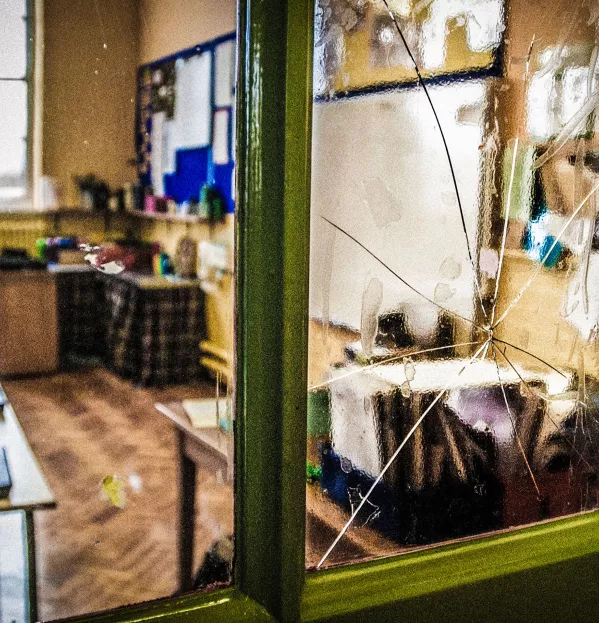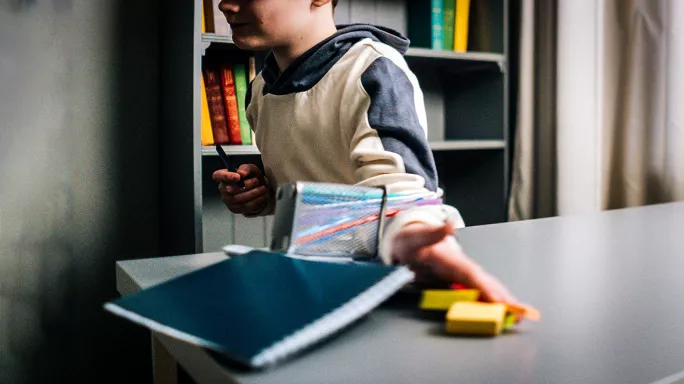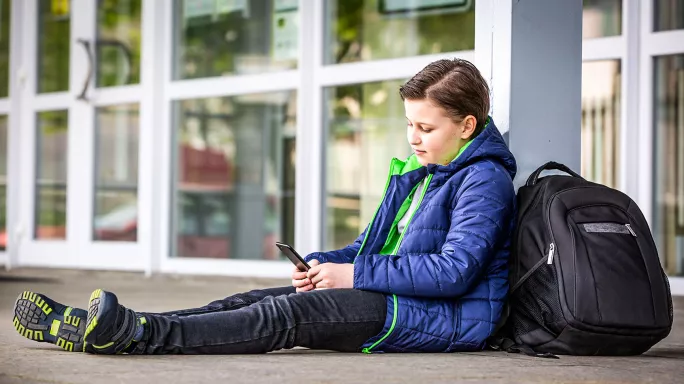
- Home
- Teaching & Learning
- General
- Behaviour in schools: is it really getting worse?
Behaviour in schools: is it really getting worse?

In classrooms across the UK, Europe, the US and Australia, teachers and school leaders say that student behaviour is a growing problem. Even in places with little in-class violence, more schools report higher rates of students being disruptive, off-task, disrespectful and chronically absent. More students are also reported to be “internally truant” - ie, in school buildings, but not in class.
In some cases, the occurrences are extreme. In Dundee, Scotland, a 17-year-old was charged with assaulting a teacher, allegedly knocking her unconscious. Parents in Washington DC report that their Reception-age students are repeatedly coming home with black eyes given to them by other five-year-olds. In Baltimore, Maryland, teachers and principals report being threatened and assaulted by students and their parents.
There are several theories about why poor behaviour is on the rise. Approaches to curbing student disruption and undesirable behaviour have also become politicised and polarised around ideas of what discipline and behaviour codes should look like in schools.
But do we know if behaviour is really getting worse? And if it is, do we understand why?
Is behaviour getting worse in schools?
When it comes to behavioural incidents, anecdotes abound, especially following the rocky reopening of schools after the pandemic. But experts say official government data is limited.
That’s partly because behaviour is subjective - classifying types of behaviour is usually down to individual teachers’ judgements in the moment in classrooms. Agreeing terms and specifications to frame what constitutes poor behaviour across a school is hard enough, let alone across a wider geographical area. This makes the data that is captured problematic.
Official data also tends to lag by up to a year or longer, which makes a real-time viewpoint impossible.
And in terms of low-level disruption in particular - the behaviour that doesn’t require the use of sanctions such as suspensions and exclusions - there are few governments that have the time or capacity to collect and process that kind of data systematically at a national level.
Lack of behaviour data
Tom Bennett, a long-time behaviour adviser for the Department for Education, says the English government is attempting to conduct a comparable year-by-year analysis - but it is only in its second year and is survey-based data. What it does suggest, though, is that schools are reporting increasing disruption from behaviour.
Away from the government, there is a patchwork of other sources. So what do they tell us?
One source is teacher experience, a valid measure when considered in the wider context. Visits to hundreds of schools over the past few years have provided Bennett with some “anecdata” that points to a rising problem.
“Every school I go to, they say behaviour has gotten worse, and truancy has gotten worse,” he says.
Recent survey data supports that.
The Tes Wellbeing Report 2024, based on survey data, found an increase in the number of schools turning to behaviour management software to reduce the workload of a rise in behaviour incidents in schools.
Meanwhile, in a Teacher Tapp survey commissioned by the BBC earlier this year, a third of UK teachers reported that they’d witnessed a student fight that week, and 40 per cent had witnessed violence that needed adult intervention. A fifth of teachers reported online or verbal abuse from a parent or guardian.
Low-level disruption
In a different Teacher Tapp survey this year, about 43 per cent of teachers said the last lesson they taught was disrupted owing to poor behaviour. This was significantly more than the number who had responded the same in previous surveys over the past five years, except for a period in 2019 when the figure was 41 per cent. Overall - particularly in primary - teachers report worse behaviour now than in the period since 2018.
A similar evidence base exists in the US. A new survey, conducted by Pew Research Center, reveals that nearly half of teachers consider student behaviour at their school “fair or poor”, and a vast majority, 79 per cent, say parents don’t do enough to hold children accountable for misbehaviour at school. Teacher responses varied widely according to the poverty level at their school, with teachers in schools with higher poverty responding more negatively about student behaviour and their perceived stress levels.
“Eight in ten teachers say the lasting impact of the pandemic on students’ behaviour, academic performance and emotional wellbeing has been very or somewhat negative,” write the Pew researchers.
Meanwhile, in Australia, a Senate committee looking into worsening behaviour in the country’s schools found disruptive behaviour was among the worst in the world. In France, a perceived worsening of behaviour is prompting trials of school uniforms in an effort to improve behaviour standards.
Attendance in schools
Chronic absenteeism, officially defined as missing 10 per cent of school days, has also substantially increased. Persistent absenteeism in England has doubled since before the pandemic, according to government data, to include more than a quarter of students. In the US, 26 per cent of students are chronically absent. Even within schools, students have gone missing owing to “internal truancy”, when students are in the building but not in class.

And the exclusions and suspensions data we have in England does suggest a growing need for these sanctions since the pandemic.
Reasons for challenging behaviour
So the data that we do have points to a worsening problem, as does the testimony of those working in schools. For many, the pandemic has been cited as the driver of that deterioration.
The National Center of Educational Statistics reported last year that 80 per cent of US schools blamed the pandemic for impacting student behaviour and socio-emotional development. Increased classroom disruptions, misconduct and incidents of disrespect, schools agreed, were due “to the Covid-19 pandemic and its lingering effects”.
But some believe it is more a “perfect storm” of challenges that are contributing to the increase in bad behaviour and absences - including teacher and support-staff shortages, lack of clear guidance on how to handle misbehaviour and a change in how families view the importance of coming to school after pandemic school closures.
“The habits children had of being at school and following structure have been lost,” Bennett says. “Children most affected by this are in the most chaotic environments. It’s a perfect storm and it’s had an impact.”
Missed social learning
Others argue that schools aren’t only responsible for academic learning, they also help many students to develop crucial socio-emotional skills, such as controlling their emotions and learning how to get along with others.
That learning was interrupted when schools were closed, putting some of the most vulnerable children behind, and there is perhaps less focus on these skills than in previous generations, owing to a greater emphasis on academic skills, partly because of efforts to catch up on missed learning.
Leanne Forde-Nassey, headteacher of the Key Education Centre pupil referral unit in Hampshire, says she is seeing more students with behavioural challenges, and it might be that lockdowns and closures prevented many students from learning important behaviour-related skills.
“We’ve got a number of children that will be developmentally more delayed,” Forde-Nassey says. “We expect them to plan, self-motivate and have executive functioning skills, but they are incapable of doing all these things. There is no way [the pandemic] hasn’t had an impact on how their brain has developed. Then they can’t engage in learning.”
Mental health in schools
Forde-Nassey also mentions the backlog of students who need mental health evaluations and diagnoses, which the pandemic worsened but were already problematic before the pandemic. In the US and the UK, mental health challenges for children and teens have surged significantly - the effects of which may play out in classrooms in the form of disruption and disobedience.
Some argue that schools may also not be paying enough attention to how a lack of academic skills can give rise to behaviour issues - skills that were also delayed because of the pandemic. Research suggests that students with poor reading skills, for example, often register more behaviour incidents, such as office referrals.
“The number of kids who missed crucial periods of instruction during the pandemic is higher,” says the behavioural analyst Matthew Cicoria. In his work consulting with US schools on behaviour issues and supporting individual students, he has found that when foundational skills are missing, students are more frustrated and less likely to cooperate with classroom norms.
Reasons to act out make sense and may even become beneficial for an academically frustrated student, Cicoria says. Getting into trouble might mean they get to stop doing the hard things they are struggling with, like writing an essay or doing long division, and they may get to leave class and spend time with an attentive adult.
“If even a five per cent increase of kids are having frustration-related academic issues, by the law of large numbers, that is a significant number” of students disrupting class, Cicoria says.
Mobile phones and education
Yet another influence may be pupils using digital technology. Research has shown how the widespread use of phones in classrooms causes distraction and academic disruption. But it’s not just phones, experts say - many students may have spent the majority of time at home during the school closures playing video games and watching YouTube.
Returning to an environment that requires paying attention for long periods may be more challenging. After focusing is disrupted, it’s often harder to get back on track.

Considering all of the facets to this problem, it’s perhaps unsurprising that teachers feel under pressure around students’ behaviour: the challenges are clearly greater and more complex than in the past.
Teachers interviewed for this piece say that we have failed to properly prepare teachers to face these challenges. Indeed, anonymously, some argue that a lack of proper behaviour training is a contributor to the behaviour challenges being seen in schools.
Teachers say that classroom management is the hardest part of their job, yet in one study, 40 per cent reported that they felt unprepared to handle classroom behaviour challenges. Experts say many new teachers didn’t receive any training on how to handle bad behaviour and disruptions in their training programmes.
Training for teachers
The US Department of Education’s Institute for Education Sciences indicates five top practices, based on research, that teachers should master for effective classroom management.
These include how to establish rules and routines, and set expectations for behaviour; how to manage time and engage students; and how to reinforce positive behaviour and redirect off-task behaviour. However, teachers aren’t often taught it - a 2020 report from the National Council on Teacher Quality shows that only about 30 per cent of US teachers receive pre-service training in those practices.
Getting that training to teachers and leaders in the UK has been crucial, Bennett says, through initiatives such as the Behaviour Hubs project that provides schools with training for teachers and leaders, and helps schools to develop a plan.
Training on what defines good behaviour extends to the students as well - an important step that schools often skip. “Lots of studies in the UK show that the best schools teach the behaviours to succeed,” Bennett says. “‘This is how we want you to behave’ - and they have clear consequences, some of which won’t be punitive.”
Bennett says that explicitly teaching behaviour expectations to students has seen some success, along with changes in leadership and other school-specific factors, in the more than 750 schools in the Behaviour Hubs programme, according to school reports and individual school case studies. (Interim data hasn’t yet been published.) But Bennett admits that the programme, which is at capacity, takes in a fraction of the 30,000 schools across the UK.
“We can’t pretend that it has changed the whole system,” Bennett said. But he hopes that they are setting an example of what’s possible by “shining a light on some of the schools that are doing exceptional work in the area of behaviour, and networking them with other schools on their own journeys”.
Yet while training is clearly needed, what complicates its delivery is the lack of agreement on what good behaviour management should look like.
Behaviour war
In the US and the UK, there are big disagreements about what might be called the philosophy of behaviour management in schools. Like the “reading wars”, a polarising kind of “behaviour war” has pitted one “side” against the other, with one group of educators believing that behaviour improves more efficiently through addressing children’s emotional needs, while others opt for a more structured approach, centred on rules, norms and consequences.
Take two of the popular approaches at opposite ends of the spectrum in the US: restorative justice and zero tolerance. Restorative justice focuses on repairing harms and relationships - ”making things right” with offending parties - instead of just handing out punishment for poor behaviour, with the aim of improving students’ socio-emotional skills and reducing suspensions. However, rigorous studies of restorative practices have found serious flaws in improving student behaviour and academic performance. Yet the same can be said for zero-tolerance policies, which focus more on doling out punishments, often for minor infractions.
On the ground, those schools that provide consistently safe environments with fewer behaviour incidents and disruptions may be coming from different philosophies but seem to have much in common. Both kinds appear to have detailed behaviour plans, good communication with educators and staff and - importantly - parents, and focus on building relationships with students and having high, specific expectations.
Kulvarn Atwal, who runs two Unicef rights-respecting primary schools - Highlands and Uphall - in Redbridge, London, said the schools’ values are kindness, respect and responsibility, and their expectations for behaviour follow those values.
Students have a right to an education, he says, but that includes respecting others’ right to the same. Children learn early to move through the school on their own without adult supervision and have a voice in decision-making. Adults have been trained to model the calm behaviour they expect from students.
Restorative approaches
Highlands and Uphall use the restorative approach to help students reflect on poor choices and make amends with someone they’ve offended, whether that’s a teacher or another student. Atwal calls more structured approaches with clear adult authority “low-trust environments”, which often just remove unwanted behaviours instead of working to improve them - whereas rights-respecting schools, such as his, hope to change unwanted behaviours.
But he said practices such as restorative justice only really work if the underlying culture supports it. “If a child is hitting the same child again and again, then it’s not working,” he says. “We aren’t a school that has no sanctions.”
Meanwhile, Barry Smith, a former headteacher who is now a behaviour consultant, is renowned in the English school system for his orderly, some might say militaristic, adults-are-in-charge ideas around managing behaviour. In relation to schools where he has worked, such as Michaela Academy and Great Yarmouth Charter Academy, he says similar things to Atwal about the need to foster a safe, positive environment, it’s just that the ideas are coming from a different place.
“My basic premise is that relationships are really important. Schools should be built on relationships and school culture is built on mutual genuine respect,” Smith says. “The adults are the boss. I’m the boss, and I’m going to tell you what to do - but I’m a very kind boss.”
Respect is shown mutually, from student to teacher and back again. For Smith, that often looks like what he calls “over-polite”, a kind of exaggerated kindness that extends from word choice to body language to facial expression, and which is supposed to convey a “warm, welcoming and friendly” attitude.
Influence of Covid-19
So might part of the solution to poor behaviour involve bringing these camps closer together to see what they have in common, rather than how they differ, to provide better training for teachers?
Like so much of this debate, it’s not that straightforward. To improve behaviour system-wide, Smith says, educators, parents and leaders would need to be more honest about the size of the challenges schools are facing - and that not just behaviour plans, but instruction and leadership, would need to improve.
We need better data (something that is increasing owing to digital behaviour monitoring tools), better research, better training and better alignment. And to a degree, that’s not a pandemic problem, Smith says, it’s a system problem that we are avoiding talking about - and until we do, these challenges will remain.
“I think we delude ourselves on lots of levels,” Smith says. “We say it’s post-Covid. I think that’s a convenient excuse.”
For the latest education news and analysis delivered directly to your inbox every weekday morning, sign up to the Tes Daily newsletter
You need a Tes subscription to read this article
Subscribe now to read this article and get other subscriber-only content:
- Unlimited access to all Tes magazine content
- Exclusive subscriber-only stories
- Award-winning email newsletters
- Unlimited access to all Tes magazine content
- Exclusive subscriber-only stories
- Award-winning email newsletters
You need a subscription to read this article
Subscribe now to read this article and get other subscriber-only content, including:
- Unlimited access to all Tes magazine content
- Exclusive subscriber-only stories
- Award-winning email newsletters
- Unlimited access to all Tes magazine content
- Exclusive subscriber-only stories
- Award-winning email newsletters
topics in this article



